*NURSING > EXAM > ATI Med Surg Practice Test A, Exam Questions & Answers (With Explained Rationales) (All)
ATI Med Surg Practice Test A, Exam Questions & Answers (With Explained Rationales)
Document Content and Description Below
ATI Med Surg Practice Test A, Exam Questions & Answers (With Explained Rationales)-A nurse is caring for a client who has hepatic encephalopathy that is being treated with lactulose. The client experi... encing excessive stools. Which of the following findings is an adverse effect of this medication? - Hypokalemia (Lactulose works by stimulating the production of excess stools to rid the body of excess ammonia. These excessive stools can result in hypokalemia and dehydration) A nurse is caring for a client who has emphysema and is receiving mechanical ventilation. the client appears anxious and restless, and the high pressure alarm is sounding. which of the following actions should the nurse take first. - instruct the client to allow the machine to breath for them. (When providing client care, the nurse should first use the least restrictive intervention. Therefore, the first action the nurse should take is to provide verbal instructions and emotional support to help the client relax and allow the ventilator to work. Clients can exhibit anxiety and restlessness when trying to "fight the ventilator" A nurse is teaching a client who has a family history of colorectal cancer. to help mitigate this risk, which of the following dietary alterations should he nurse recommend? - Add cabbage to the diet (To help reduce the risk for colorectal cancer, the client should consume a diet that is high in fiber, low in fat, and low in refined carbohydrates. Brassica vegetables, such as cabbage, cauliflower, and broccoli, are high in fiber) A home health nurse is assigned to a client who was recently discharged from a rehabilitation center after experiencing a right-hemispheric cerebrovascular accident(CVA). Which of the following neurologic deficits should the nurse expect to find when assessing the client? - Visual spatial deficits Left hemianopsia One-sided neglect Visual spatial deficits and loss of depth perception occur secondary to a right-hemispheric stroke Left hemianopsia, or blindness in the left half of the visual field, occurs secondary to a right-hemispheric stroke One-side neglect, or an unawareness of the affected side, occurs secondary to a right-hemispheric stroke A nurse is caring for a client who has viral pneumonia. The client's pulse oximeter readings have fluctuated between 79% and 88% for the last 30 min. Which of the following oxygen delivery systems should the nurse initiate to provide the highest concentration of oxygen? - Nonrebreather mask The nurse should initiate a nonrebreather mask to deliver between 80% to 95% oxygen to the client. A client who has an unstable respiratory status should receive oxygen vis a nonrebreather mask. A nurse is caring for a client who has bilateral pneumonia and a SaO2 of 85%. the client has dyspnea with a productive cough and is using accessory muscles to breath. Which of the following actions should the nurse take first.? - place the patient in high fowlers. The greatest risk to this client is injury from airway obstruction. Therefore, the priority intervention the nurse should take is to move the client into high-Flower's position. High-Flower's position facilitates lung expansion and improved ventilation and gas exchange. A nurse is planning care for a client who has extensive burn injuries and is immunocompromised. which of the following precautions should the nurse include in the plan of care to prevent pseudomonas aeruginosa infection? - Avoid placing plants and flowers in the patients room. Live plants can harbor P. aeruginosa, and this bacterium can infect burn wounds and cause life-threatening complications. The nurse should ensure no one brings live plants or flowers into the client's room An older adult client is brought to an emergency department by a family member. Which of the following assessment findings should cause the nurse to suspect that the client has hypertonic dehydration? - Urine specific gravity is 1.045 A urine specific gravity greater than 1.030 indicated a decrease in urine volume and an increase in osmolarity, which is a manifestation of hypertonic dehydration. Skin turgor is unreliable indication of dehydration RR is to increase if dehydration occurs not decreased a nurse in an emergency department is reviewing the providers prescriptions for a client who sustained a rattlesnake bite to the lower leg. which of the following prescriptions should the nurse expect? - opioid analgesic To promote comfort following a rattlesnake bite Wrong answers: Apply ice for bite from a black widow spider Corticosteroid and antihistamines for stings from bees and wasps Keep affected extremity at heart level, not above or below it [Show More]
Last updated: 4 weeks ago
Preview 5 out of 32 pages

Loading document previews ...
Buy this document to get the full access instantly
Instant Download Access after purchase
Buy NowInstant download
We Accept:

Reviews( 0 )
$14.50
Can't find what you want? Try our AI powered Search
Document information
Connected school, study & course
About the document
Uploaded On
Jul 01, 2025
Number of pages
32
Written in
Additional information
This document has been written for:
Uploaded
Jul 01, 2025
Downloads
0
Views
14
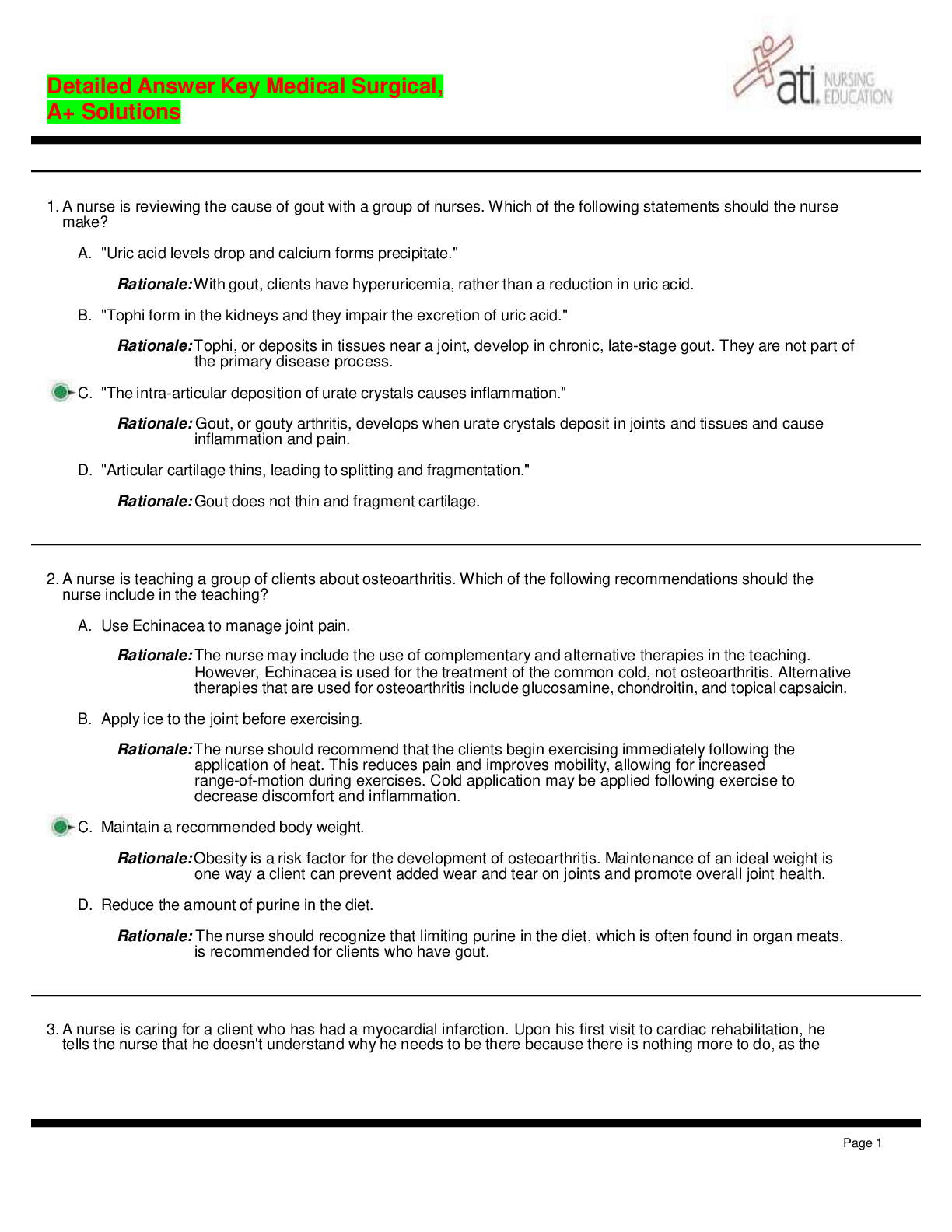


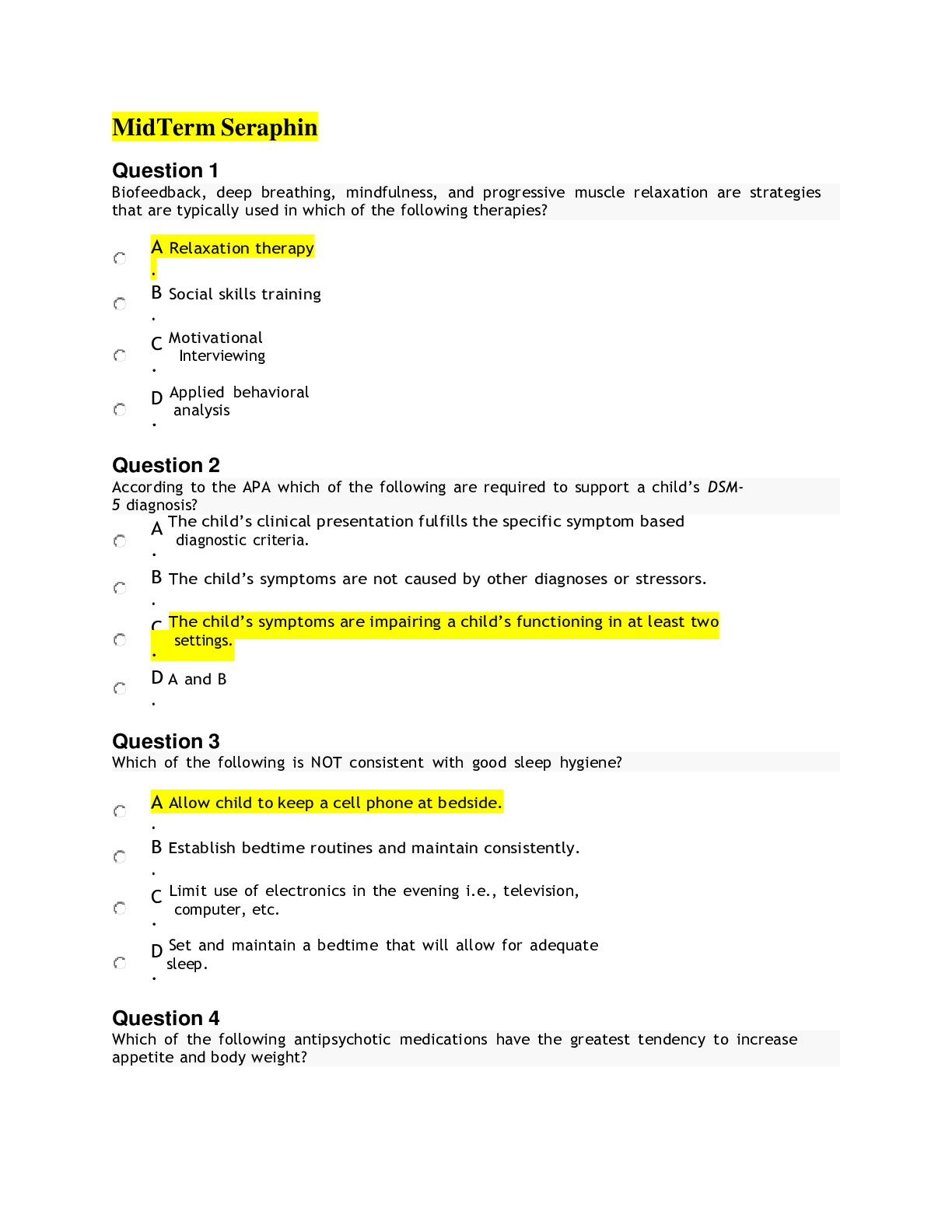
 Pediatrics Practice Exam-Answered.png)
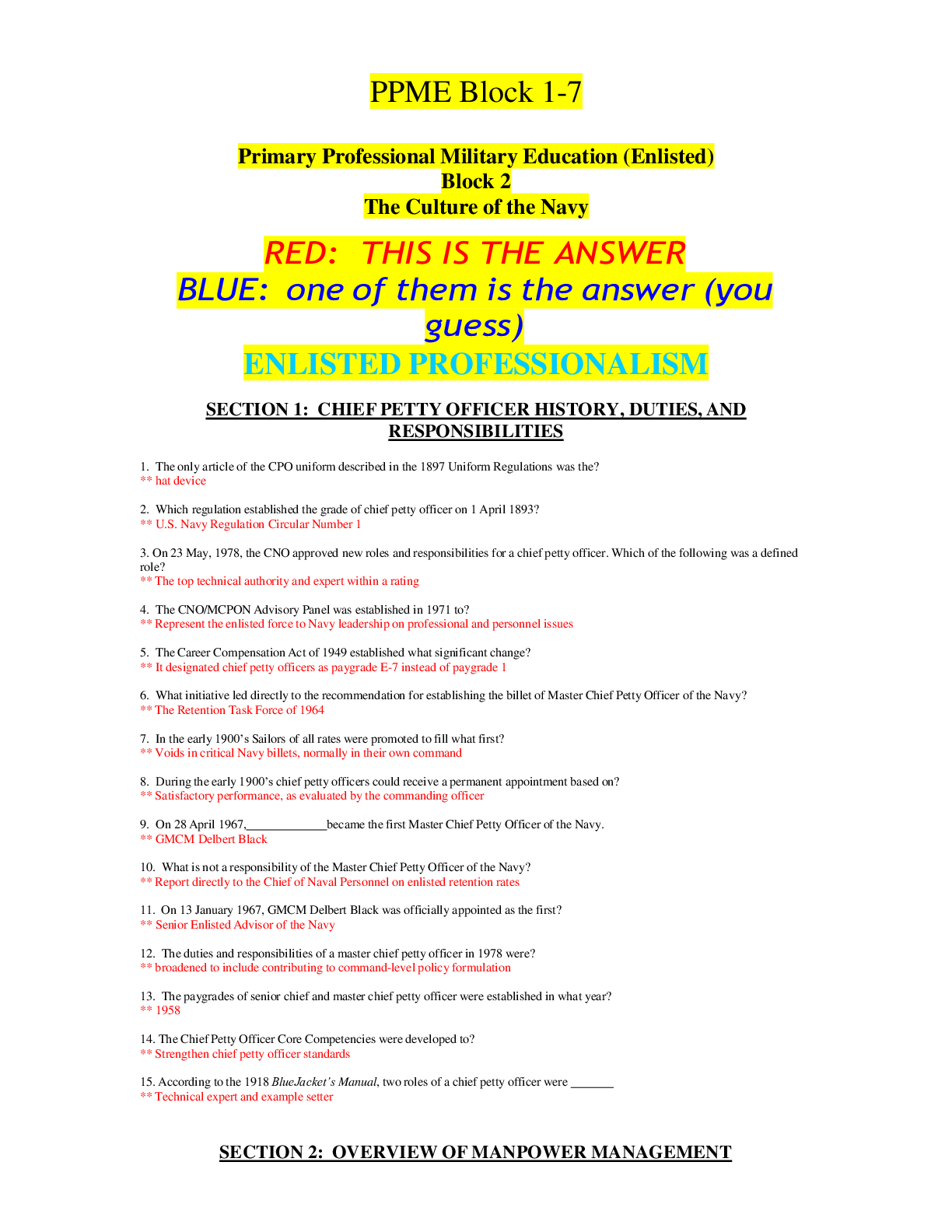
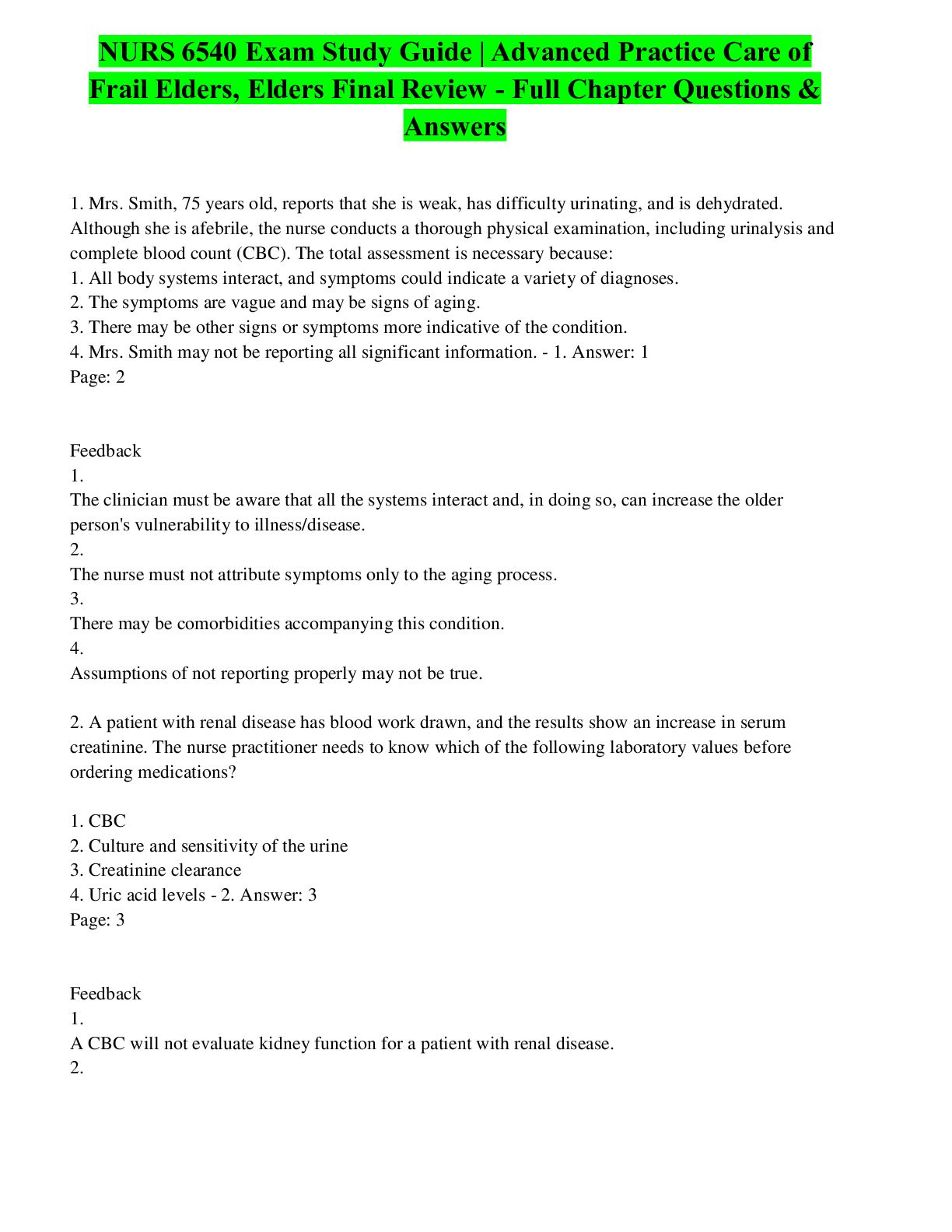

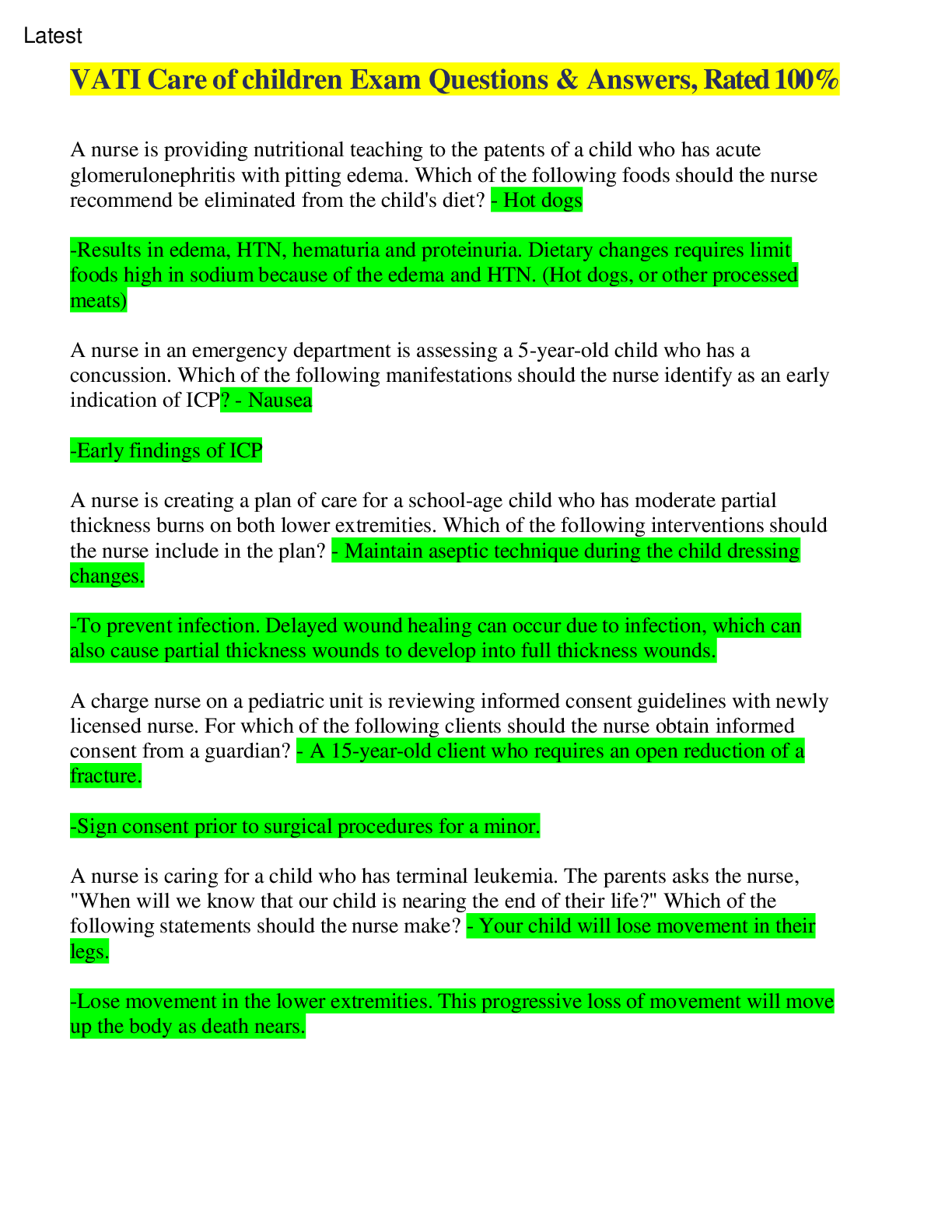
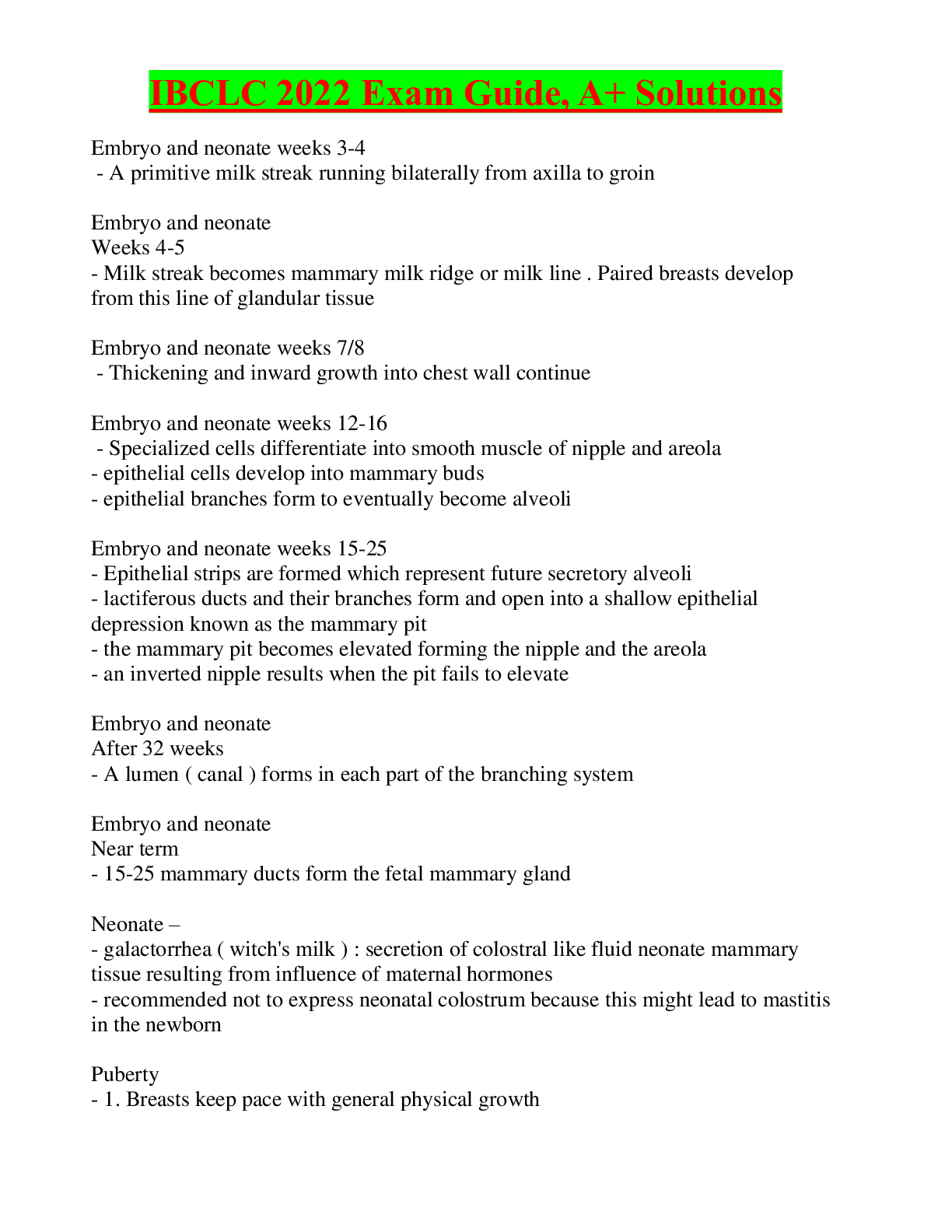
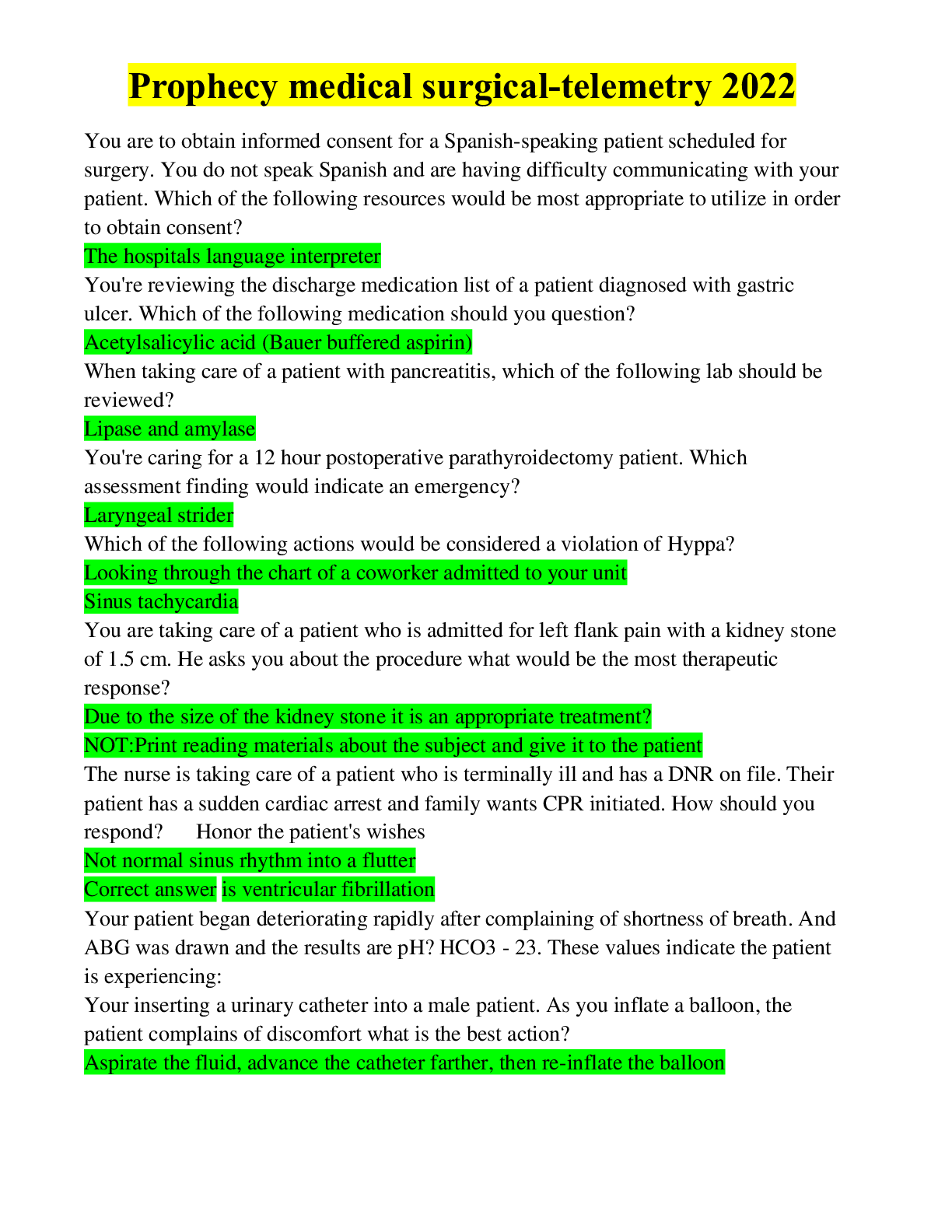
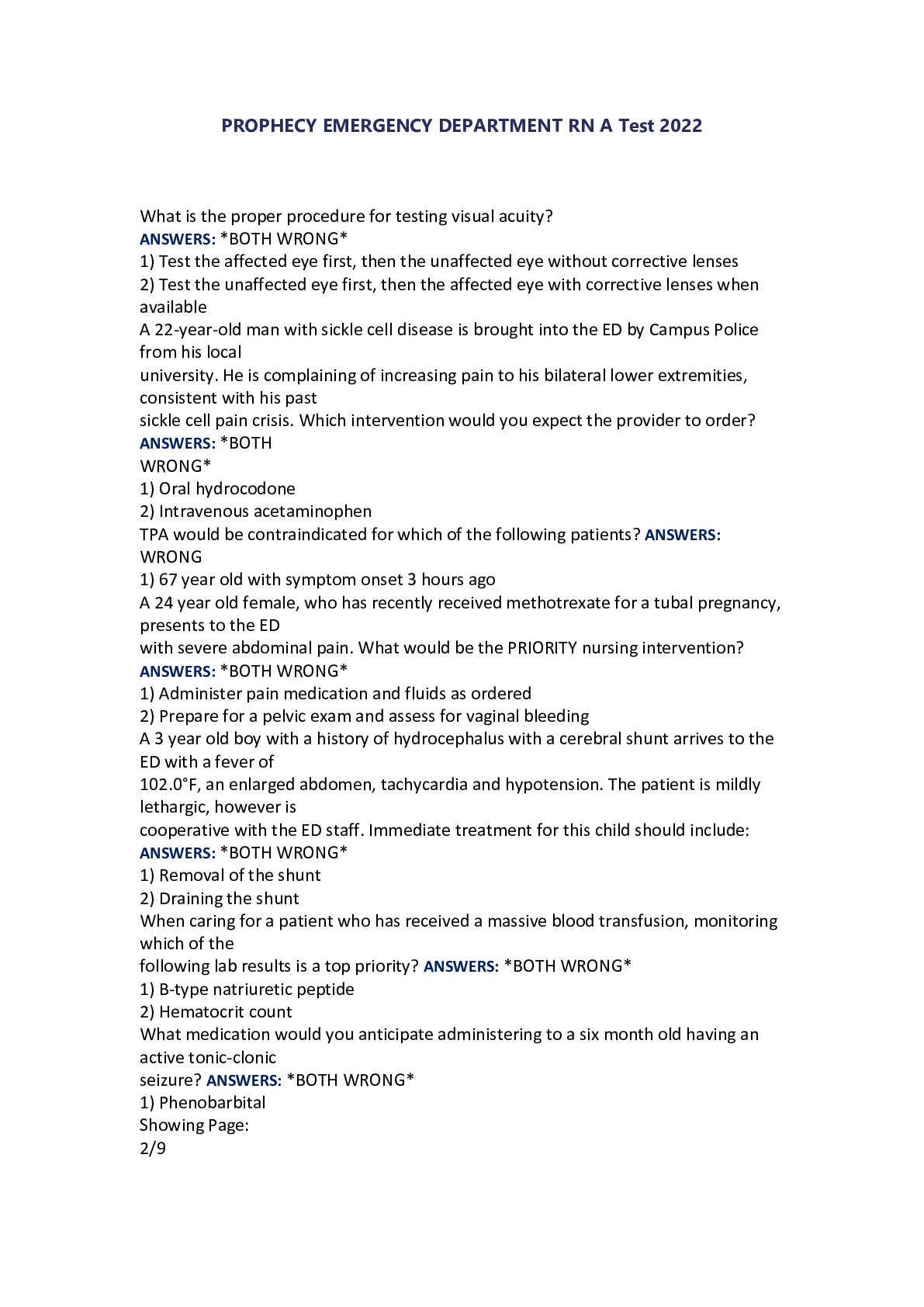


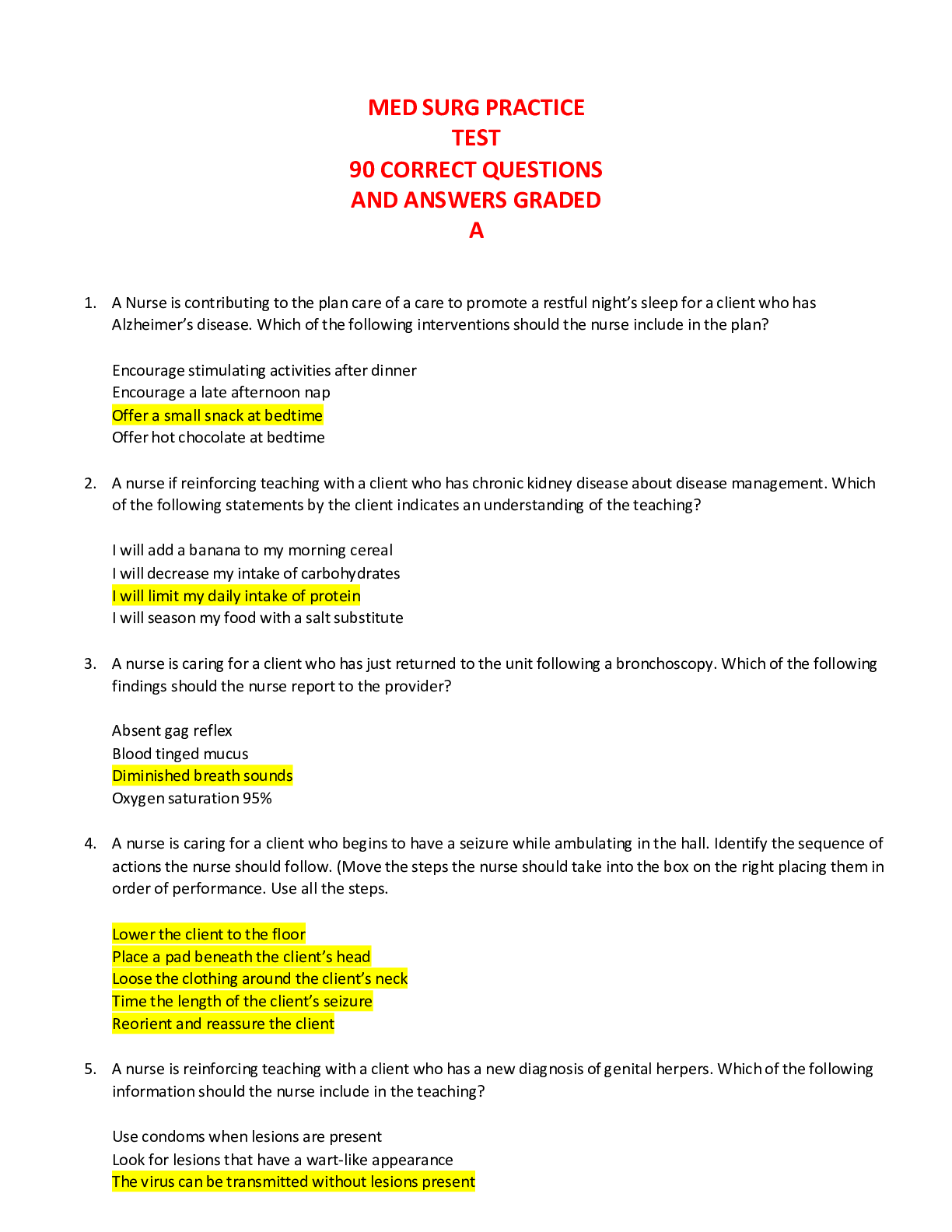



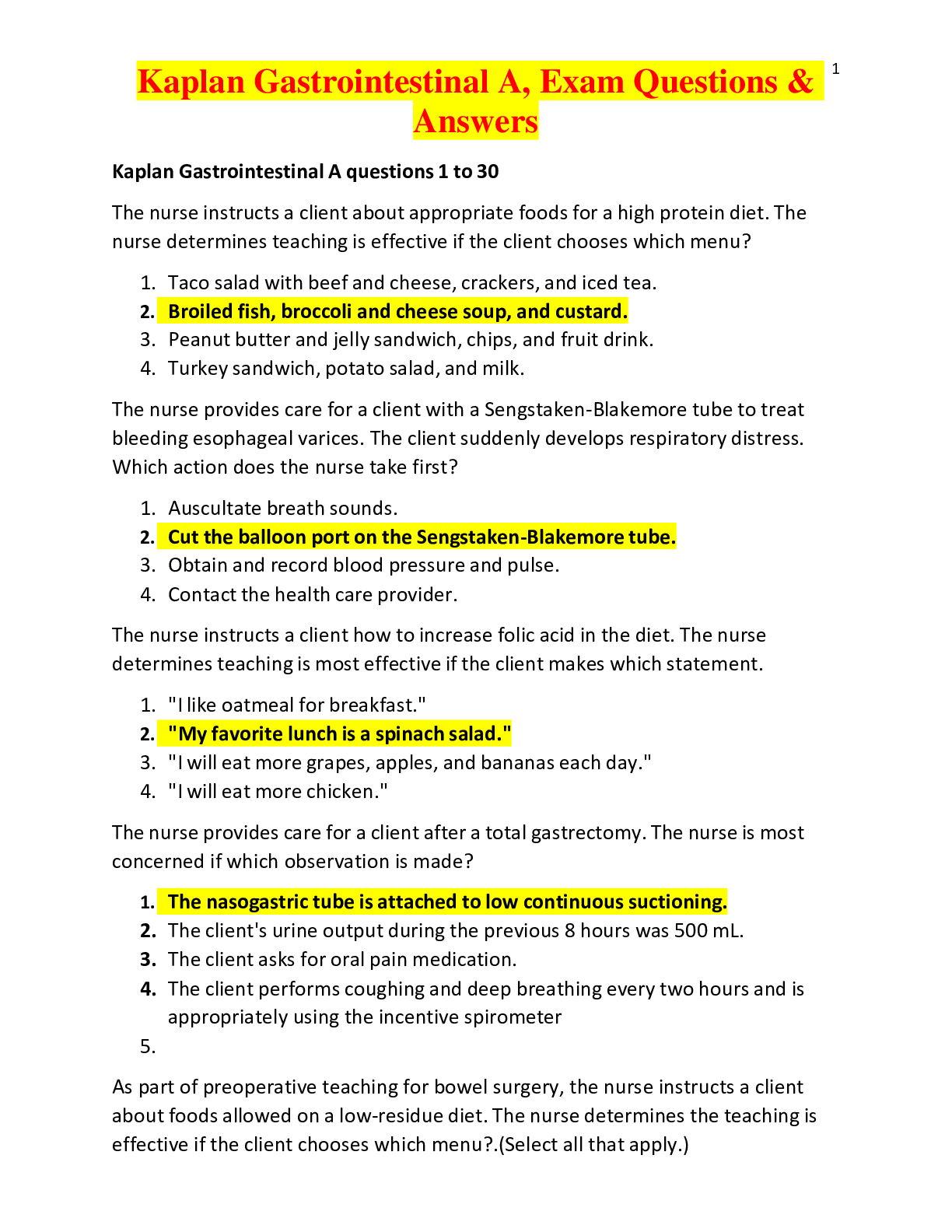

.png)


